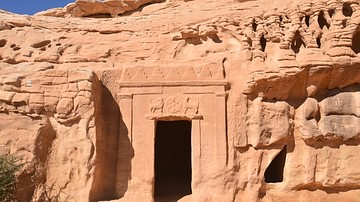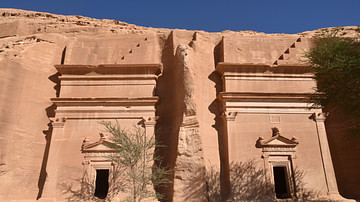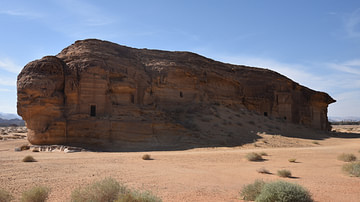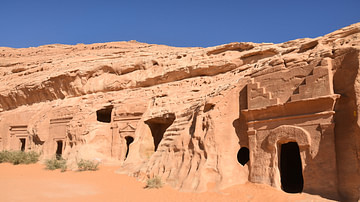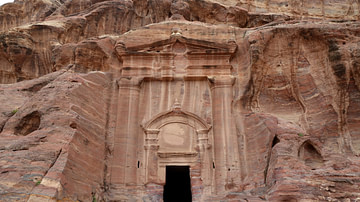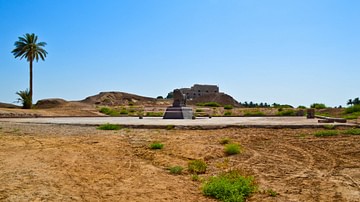Illustration
The Tomb of the Lion of Kuza (Qasr al-Farid) is a 1st-century CE Nabatean unfinished tomb carved into a single huge rock in Hegra (Madain Saleh) in Saudi Arabia, the Kingdom of Nabatea's second capital after Petra. Qasr al-Farid is isolated from the rest of the tombs, lying in the southeastern part of Hegra. It is the largest tomb, with a height of about 22 metres (72 ft), and is the one with four large pilasters decorating the façade. The inscription above the entrance says: "... for Lihyan son of Kuza (and) his descendants...".
Hegra was the southernmost capital of the Nabatean people, a once-nomadic Arabian tribe that settled and grew wealthy from trade in frankincense, spices and other luxury commodities. The Nabatean city peaked between about 50 BCE and 106 CE. Hegra is Saudi Arabia’s first UNESCO World Heritage Site.
About the Author
Cite This Work
APA Style
Raddato, C. (2024, February 21). Tomb of the Lion of Kuza, Hegra. World History Encyclopedia. Retrieved from https://www.worldhistory.org/image/18501/tomb-of-the-lion-of-kuza-hegra/
Chicago Style
Raddato, Carole. "Tomb of the Lion of Kuza, Hegra." World History Encyclopedia. Last modified February 21, 2024. https://www.worldhistory.org/image/18501/tomb-of-the-lion-of-kuza-hegra/.
MLA Style
Raddato, Carole. "Tomb of the Lion of Kuza, Hegra." World History Encyclopedia. World History Encyclopedia, 21 Feb 2024. Web. 03 Apr 2025.




